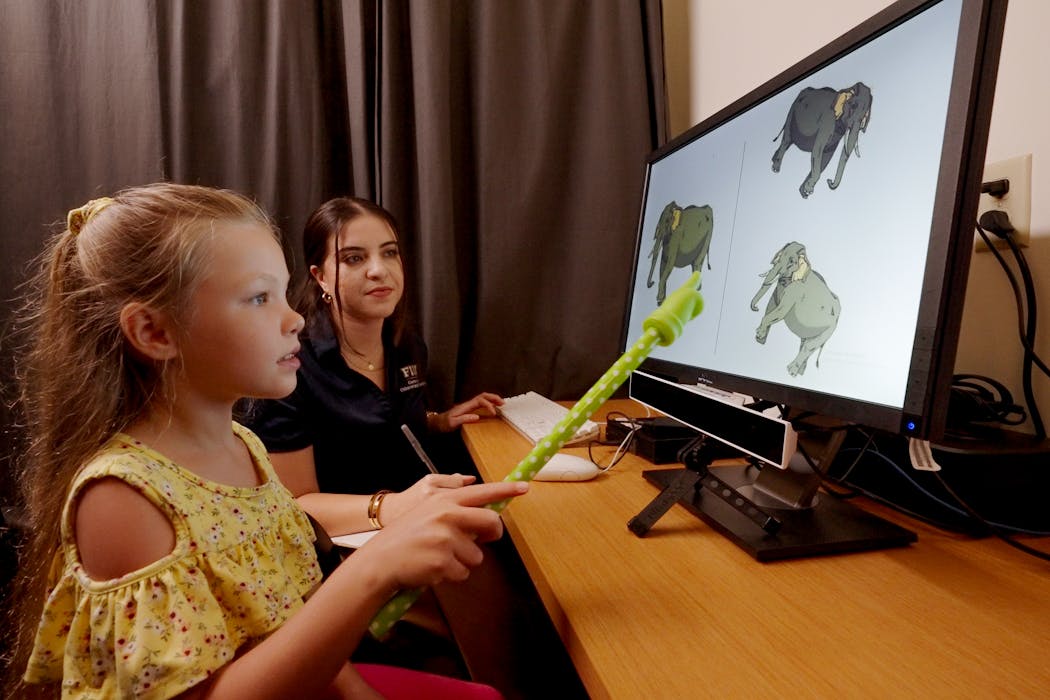Even before they can read, young children are visualizing letters and other objects with the same strategies adults use
- Written by Shannon Pruden, Professor of psychology, Florida International University
 A student looks at different images, as eye-tracking technology monitors how she is visualizing the objects. Chris Necuze/FIU, CC BY
A student looks at different images, as eye-tracking technology monitors how she is visualizing the objects. Chris Necuze/FIU, CC BYWhat do puzzles, gymnastics, writing and using maps all have in common?
They all rely on people’s ability to visualize objects as they spin, flip or turn in space, without physically moving them. This is a...

